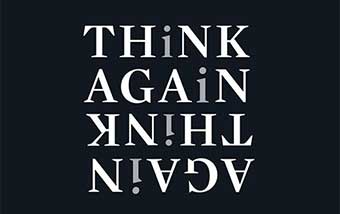Ancestor Hominin
Fossilized footprints of Neanderthal were recently found in the sandstone of an ancient beach in northern France, adults with children going one way, adults only going back the other way.
Starting forty thousand years ago, Neanderthal gradually disappeared, the last of them living in caves in the north and eastern sides of the rock of Gilbraltar.
We are not sure why.
The Neanderthal made fire, made and used tools, and lived in nomadic groups. They were mostly ambush hunters, striking from woodland cover, with hand-held spears. They did not have projectile weapons. They may have had burials, and likely decorated themselves. They may have had rudimentary art.
Their disappearance coincided with the arrival of modern humans, who came into Europe from Africa and the Middle East and hunted much the same food as the Neanderthal – elk, horses, reindeer, aurochs, bison, and the woolly mammoth. The Neanderthal were bigger and stronger than modern humans. We have no evidence of war.
“We should see evidence of the direct killing of neanderthals by modern humans – and we don’t..
We have always assumed that we modern humans were smarter. We maintained larger groups. The white sclera of our eyes empowered our social and verbal communication. We had projectile weapons, and could better hunt in the open – courser predators . . . We could hunt in packs. We hunted for furs as well as for food, used bone needles for sewing, and made better clothes. Our shelters, and burial ceremonies were more elaborate. We clearly made art. And we harnessed the skills that reside in the genes of other species, for our own advantage. We domesticated wolves, and our dogs were immensely helpful in hunting, able to run down prey, hold them at bay for the kill, and help defend against scavenger predators.
Perhaps we simply out hunted Neanderthal.
But maybe not.
Something else happened just as modern humans arrived – the Campanian Ignibrite Eruption, the largest volcano eruption in Europe of the past 200,000 years. This happened in the Gulf of Pozzuoli, just west of the modern city of Naples, Italy, and just east of Mount Vesuvius.
Before the time of Pangea – the great universal continent formed when all tectonic land masses came together – there was a great sea that encircled the globe, the Tethys Sea. This sea became the Mediterranean Sea as the African tectonic Plate migrated north and collided with the Eurasian Plate to complete the super continent. This collision created the the cliffs of the northern mediterranean shore, the volcanoes of western Italy. . . and the Campanian eruption.
The eruption sent volcanic ash 7000 km, in all directions, covering all of Italy and eastern Europe. A volcanic winter followed, with cold temperatures over all of Europe, causing loss of game and the woodlands, changing the game of survival.
Modern Humans were able to get to Southeast Asia and Australia 50-70,000 years ago. Cline Findlayson suggests that maybe Neanderthal were able to keep them out of Europe . . .until the Campanian Eruption.
More than the modern human mind, it may have been the modern human body, the more gracile, more energy efficient body from Africa, better at walking and running over longer distances, that favored survival for modern humans in the cold and open steppe terrain that Europe became.
“I maintain that humans are the most invasive species that has ever lived.” The Invaders, Pat Shipman.
Neanderthal do live on, their genes living on in the genes of modern humans. They are our. . . ancestors.
Philosophers have tried to understand the nature of human nature for thousands of years. Hominin ancestors like Neanderthal can tell us.
Neanderthal lasted for 400,000 years. . . . Will we?


